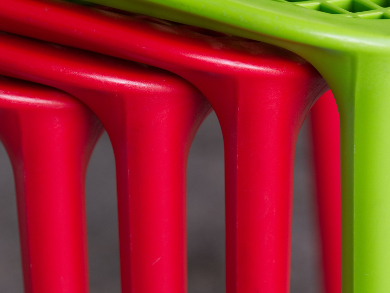Microfluidic “labs-on-a-chip” are useful for wide range of applications in analytical chemistry. A common method of making microfluidic chips is casting from a template. While the templates for this process are commonly made by photolithography, easier techniques such as 3D printing can decrease costs and accelerate the production of prototypes. However, the resolution of 3D printing is usually above 50 μm, far worse than that of photolithography.
Yanbo Xie, Northwestern Polytechnical University, Xi’an, China, and colleagues have developed a method to improve the resolution of 3D-printed molds for microfluidics. The team first 3D-printed a chip template, and then used it as a mold to cast a mixture of a solution of polyurethane (PU) and water. After curing, the PU was kept at 60 °C until the solvents evaporated, shrinking to about half the original size during this process. The shrunken PU was used as a mold to cast a polydimethylsiloxane (PDMS) chip. Using the smaller PDMS chip as a template, the researchers repeated the process to shrink the microfluidic chip and thereby improve the resolution of the original 3D printing process.
The team used the method to make a microfluidic mixer. After three shrink cycles, the width of the mixer’s channels was reduced from 609 μm to about 68 μm. For other shapes, the team found it possible to downscale structures down to about 4 μm. According to the researchers, the method can also be used to shrink hand-made shapes down to microfluidic chips, significantly reducing technical barriers and the need for specialized equipment.
- Improving the Resolution of 3D-Printed Molds for Microfluidics by Iterative Casting-Shrinkage Cycles,
Miao Sun, Yanbo Xie, Jihong Zhu, Jun Li, Jan C. T. Eijkel,
Anal. Chem. 2017.
DOI: 10.1021/acs.analchem.6b05148
